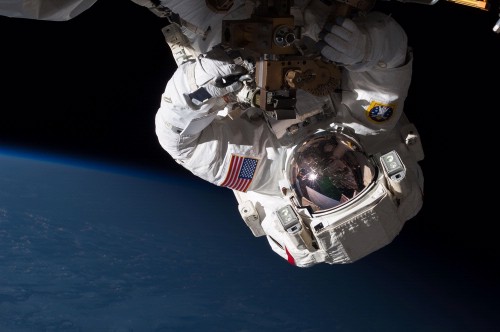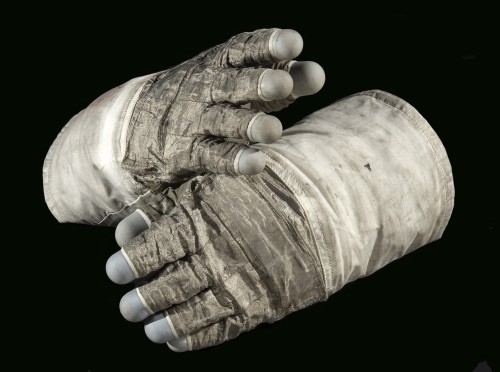
Expedition 35 Flight Engineers Chris Cassidy (pictured) and Tom Marshburn (out of frame) completed a spacewalk on May 11, 2013, to inspect and replace a pump controller box on the International Space Station. Credit: NASA/Goddard Space Flight Center
To commemorate the 50th anniversary of the first spacewalks in 1965, the National Air and Space Museum in Washington, DC is launching a new exhibition, “Outside the Spacecraft: 50 Years of Extravehicular Activity.”
The exhibit runs from January 8 through June 8, 2015 and includes artifacts, personal accounts and photographs, including the impressive images shared here.
The first spacewalks were taken by Aleksei Leonov (on March 18, 1965) and Edward White (June 3, 1965) in the spring of 1965 and, since then, more than 200 astronauts and cosmonauts have logged more than 1,000 hours walking and working outside spacecraft.
According to a NASA story on spacewalking, when ordered to climb back inside the Gemini spacecraft in 1965, Ed White, America’s first spacewalker said it was “the saddest moment of my life.”
White had spent more than half an hour floating freely in space.
NASA reports that some astronauts liken walking in space to being underwater. And astronaut John Herrington, veteran of three spacewalks totaling almost 20 on the STS-113 mission of the Space Shuttle Endeavour, pointed out that the simulated trained he received didn’t prepare him for the smell of space. Astronauts say the burnt metal smell of space lingers on spacesuits after they come inside.

The gloves were constructed of an outer shell of Chromel-R fabric with thermal insulation to provide protection while handling extremely hot or cold objects. The blue fingertips were made of silicone rubber to provide sensitivity. Credit: National Air and Space Museum Archives, Smithsonian Institution
According to the Smithsonian Institution National Air and Space Museum, “EVA changed the nature of human spaceflight. It made possible walking on the Moon, servicing the Hubble Space Telescope, and building the International Space Station [and] remains crucial to our ongoing presence in space.”
Thanks for visiting Stuck at the Airport. Subscribe to get daily travel tidbits. And follow me on Twitter at @hbaskas and Instagram.